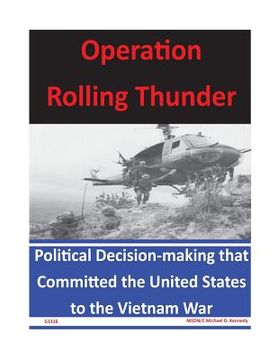Operation Rolling Thunder: Political Decision-making that Committed the United States to the Vietnam War (in English)
Synopsis "Operation Rolling Thunder: Political Decision-making that Committed the United States to the Vietnam War (in English)"
The assassination of South Vietnamese President Ngo Dinh Diem on November 1, 1963, left a leadership void in Saigon that was never filled. Heads of state went through Saigon like a revolving door, yet none of them were able to successfully lead and govern the people of South Vietnam.On the other side of the globe, President of the United States John F. Kennedywas assassinated on November 22, 1963. While the U.S. had a line of succession, President Johnson was relatively new to the Vietnam situation. Even though Johnson was new, he still had Kennedy's cabinet and advisers to aid his decisions. Despite this, by early 1964 two new leaders, Nguyen Khanh and Lyndon Johnson sought a solution to the decades long struggle in Vietnam.President Johnson inherited a three-front war in Vietnam. One front was NorthVietnamese support of the Viet Cong (VC) insurgency in South Vietnam, and Johnson had to stop this support in order to defeat the VC. The insurgency itself constituted another front that had to be defeated in order to maintain a free and independent South Vietnam. The third overarching front was the creation of a stable and legitimate government in Saigon capable of governing the people of South Vietnam. The question for his administration was on which of these aspects to focus. Before Johnson could make that decision, he first had to decide if the U.S. should continue to aid Saigon; therefore, he had three options: leave Vietnam, continue in an advisory role, or escalate U.S. involvement.The political and military situations in Vietnam deteriorated to such a pointthrough 1964-1965 that by February 1965 there were no good choices left from which President Johnson could choose. Johnson desired for there to be a stable South Vietnamese government before he committed U.S. forces to its defense; however, no such government emerged. The administration was unwilling to risk U.S. prestige, resources, and lives unless they were confident South Vietnam could succeed without U.S. support. Because of the instability in South Vietnam as well as the perceived risk of communist aggression, President Johnson decided that escalatory military actions wouldbe limited and gradual. Therefore, President Johnson made the least bad decision he could in February 1965 by initiating Operation ROLLING THUNDER and committing the United States to the Vietnam War.

